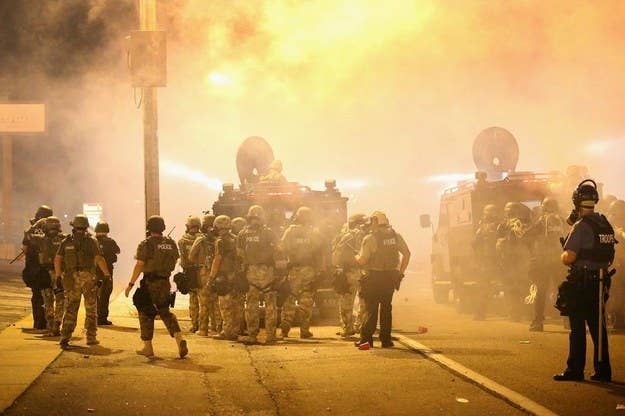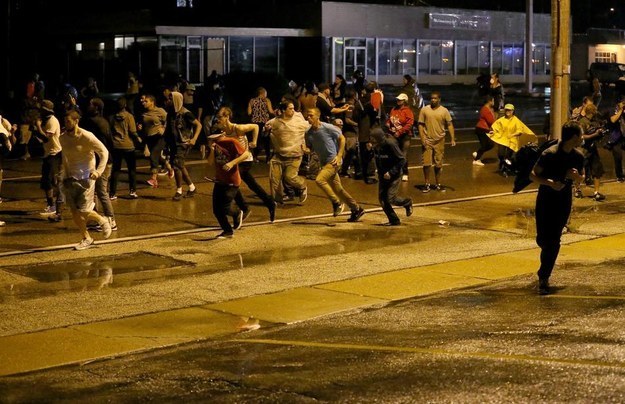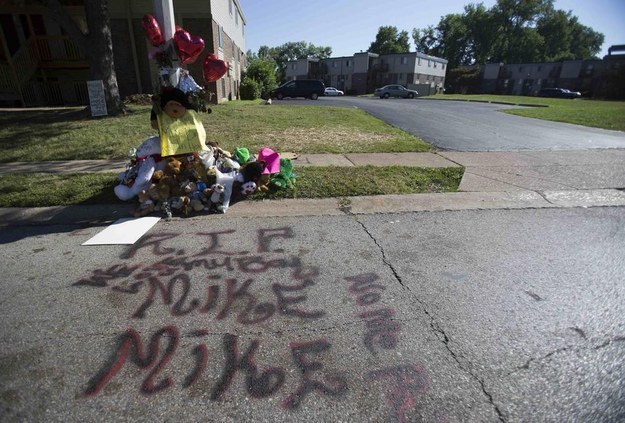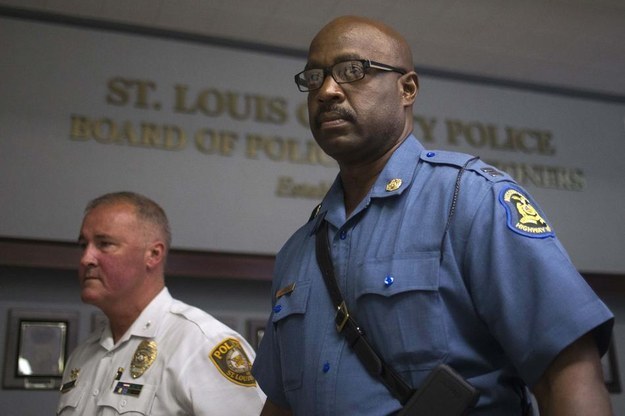
Police in Ferguson committed an array of human rights abuses during the protests that followed the Aug. 9 death of Michael Brown, according to a new report.
The 26-page Amnesty International report "outlines some of the human rights abuses and other policing failures" that were observed by a delegation that was sent to Ferguson on Aug. 14. BuzzFeed News journalists saw and spoke with members of the delegation on several occasions during the protests.
A spokesman for the St. Louis County Police Department — which was one of several agencies with officers at the protests — responded to the report by telling Reuters that law enforcement "had one mission, and that was the preservation of life."
Here are some of the alleged abuses detailed in the report:
Police used force, including tear gas and rubber bullets, against peaceful protesters.

The report mentions several times police fired tear gas at protesters, including one instance (p. 13) during which "it appeared that flash bangs and tear gas were thrown directly in front of the line of protestors, forcing" them to run down W. Florissant Ave. The report also recounts instances in which police used rubber bullets (p. 13), pepper spray (p. 12), and "long range acoustic devices" (p. 14) to disperse crowds.
The report — which lists the examples of police force in a section on "human rights concerns" — acknowledges that some looting and vandalism took place. However, it adds that the police response punished protesters and vandals alike (p. 6). It also was unclear if police gave lawful orders to disperse, the report adds (p. 12).
Police forced protesters to "keep moving or be arrested."

Officials began forcing protesters to keep moving at all times or face arrest on Aug. 18 (p. 7). It was a shift in tactics that largely worked for police — but one that also happened to be illegal.
The report criticizes the tactic on a variety of grounds, including that it was arbitrarily applied and that a "protest zone" for people to rest in was an improper solution. The report also notes that some felt the order to keep moving was designed to tire out protesters and get them to go home. Several people at the scene mentioned similar concerns to BuzzFeed News reporters as well.
Missouri Gov. Jay Nixon imposed a curfew during the protests.

The curfew was in effect Aug. 16 and 17, before the National Guard arrived (p. 7). The report argues that the curfew limited people's rights to demonstrate peacefully, and "also the freedom of movement of the general public in Ferguson who were required to be off of the streets after midnight each night."
Police intimidated protesters and the media.

The report mentions (p. 10) several instances when police at the protests were armed with semiautomatic weapons and had police dogs — both things witnessed by BuzzFeed News reporters as well. Police also were equipped with riot gear, batons, shields, and helmets, and the response served to escalate tensions at the scene, the report argues. It also recounts an instance in which an officer pointed a gun at journalists and threatened to kill them.
The report also details ways in which police restricted the media, including arresting at least 19 journalists (p. 16).
The report expresses skepticism that Brown posed a threat to police before he was killed, and calls for a thorough investigation into his death.

After noting that the events leading up to Brown's death remain unclear, the report calls for a thorough investigation (p. 3). It also states that force should only be used "to save life" (p. 2), and that because he was unarmed, Brown was "unlikely to have presented a serious threat to the life of the police officer."
Amnesty International did not receive any official response from Capt. Ron Johnson, who commanded law enforcement during the protests.

The report describes a 15-minute meeting (p. 16) with Amnesty delegates and Johnson, pictured above, in the back of an unmarked police car on Aug. 21. In order to secure the meeting, delegates had to promise that media would not be included, and that they would not use social media while it was happening.
The delegates presented Johnson with a series of questions, but neither he nor a spokesperson of the Missouri Department of Public Safety — who also attended the meeting — had responded by the time the report was written.
